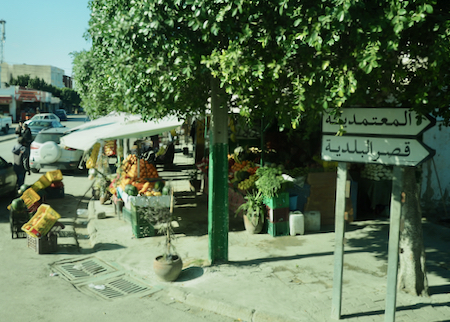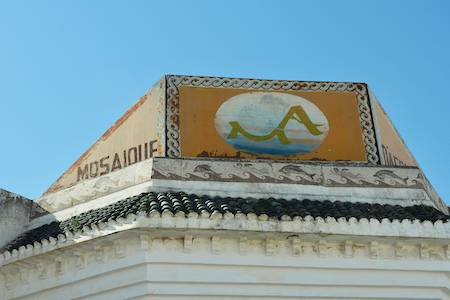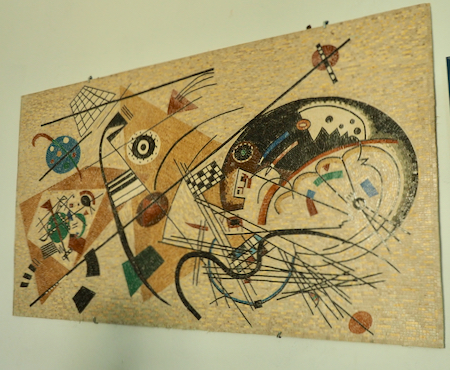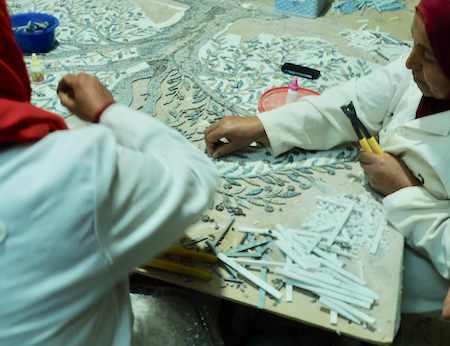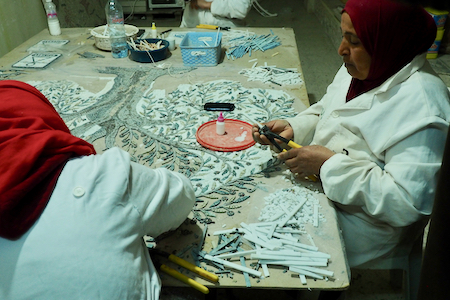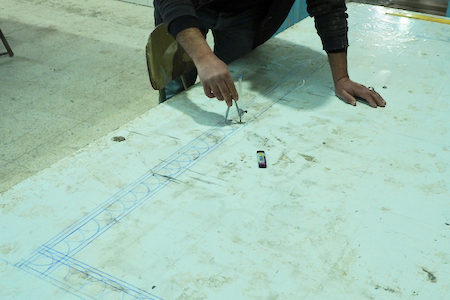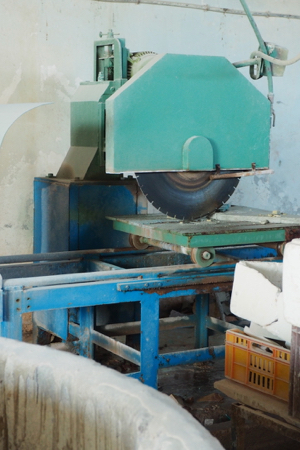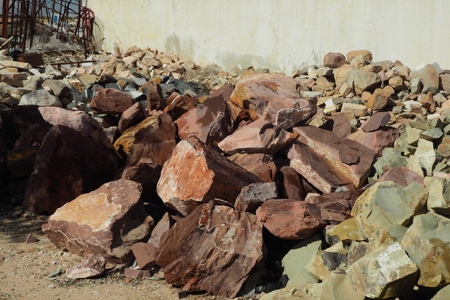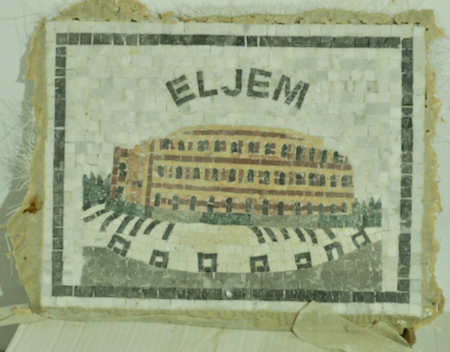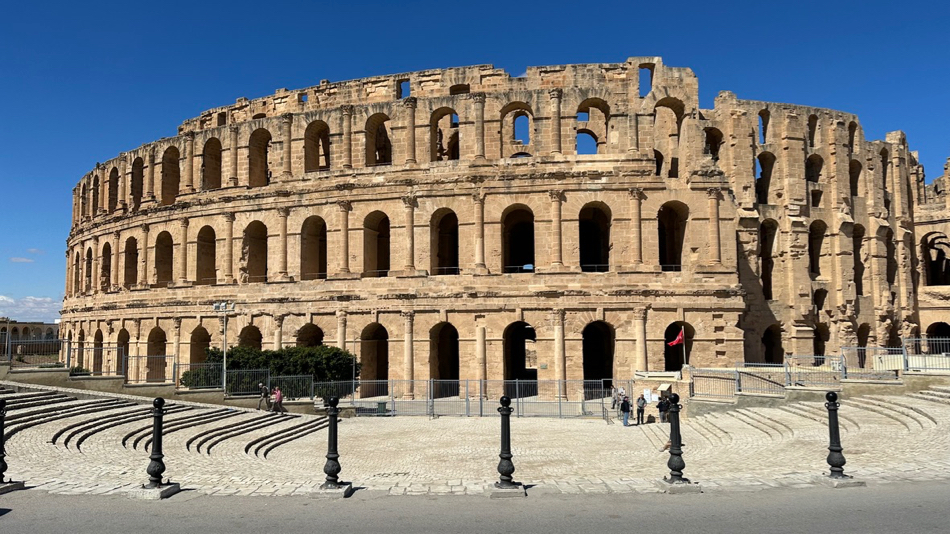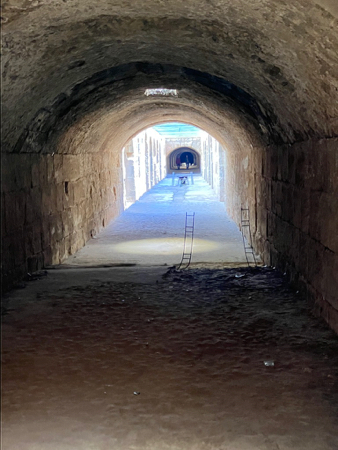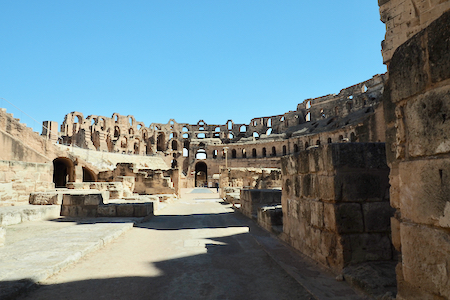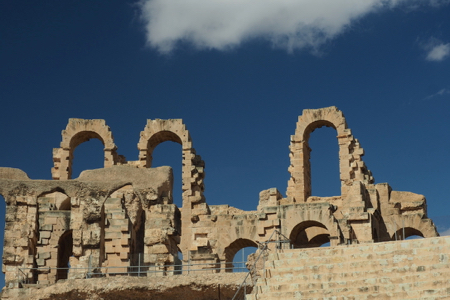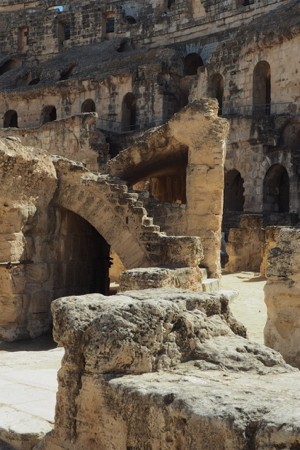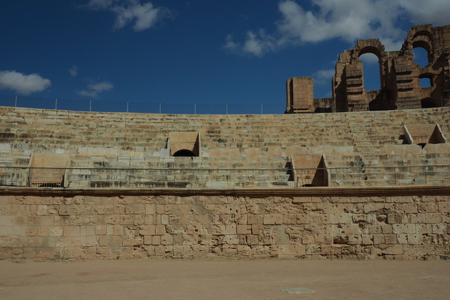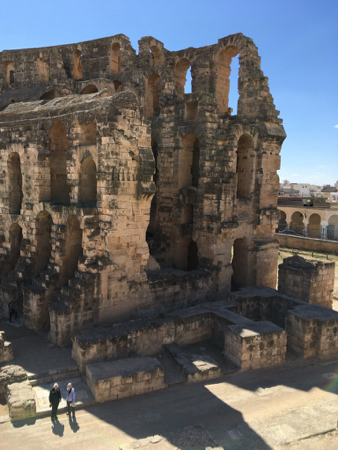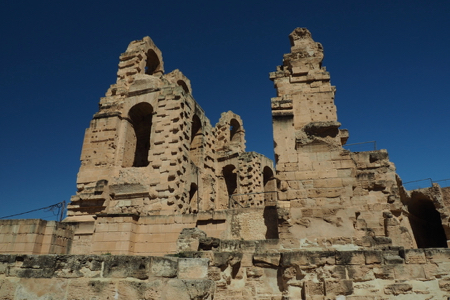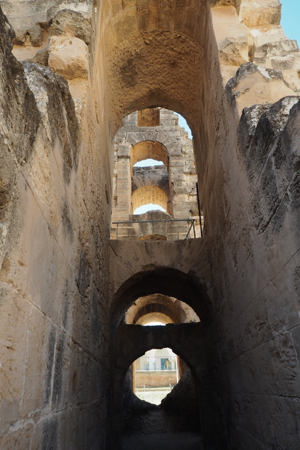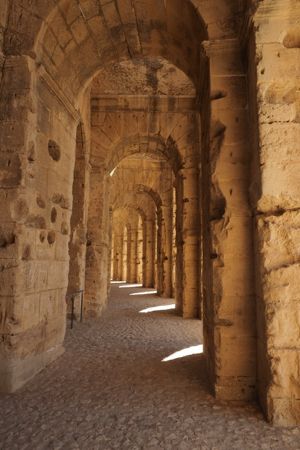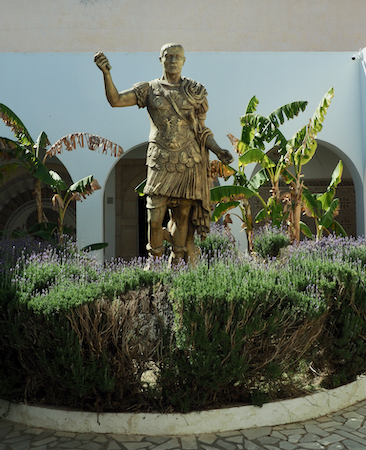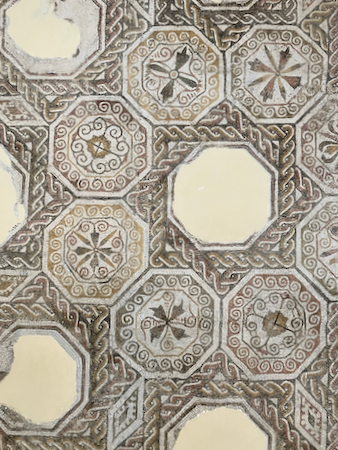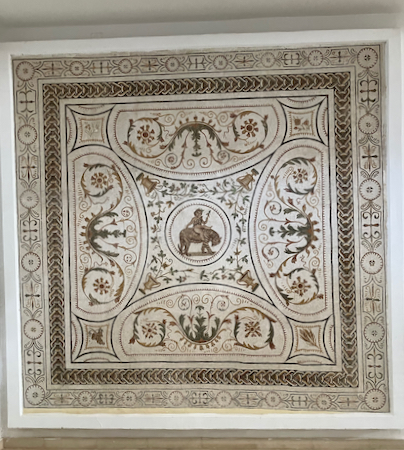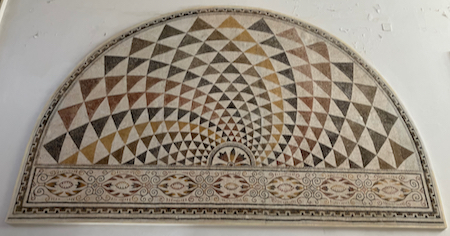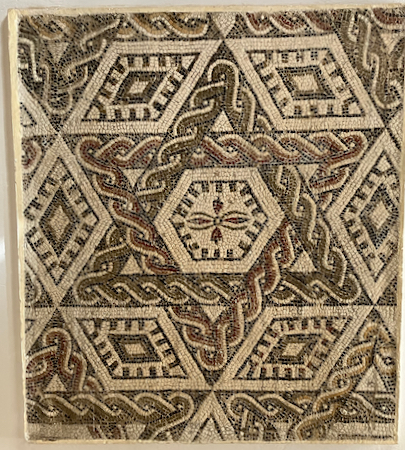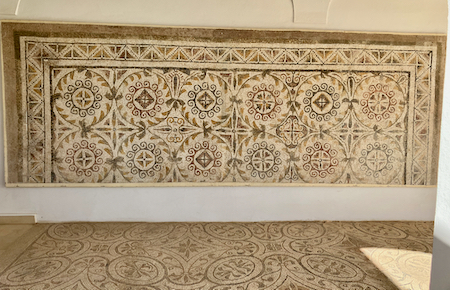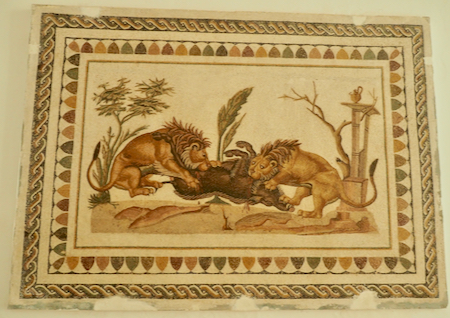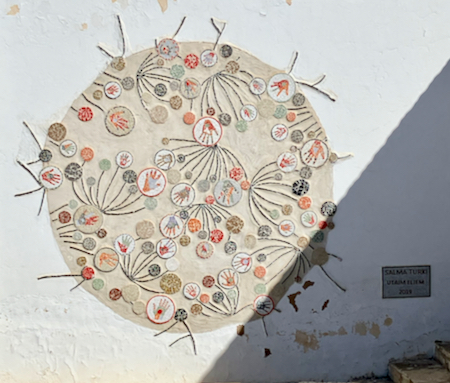Fri., 3/3/23 - El Jem (or El Djem)
Today's first stop was at a 15-person workshop where they manufacture mosaics in the original Roman tradition. Marble, of many colors comes from around the world. It is cut using very large electric saws that slice the large pieces down into sticks from which are cut the tile squares. A design is drawn on plastic and white glue is used to hold the tiles on the design. (The picture is upside down on the plastic.) When all the tiles have been cut and glued in place, a cement covers the mosaic back side and a netting is stretched on the back cement. After it dries, it is flipped and the right side is finished and polished. The large mosaics are used on floors, walls, or the bottom of swimming pools, etc. This place also makes micro-mosaic pictures and can make mosaics off photographs of famous paintings (see below). Some of the modern art pieces were amazing.
Corner market
Mosaique Tile Workshop
A Picasso
A Miro
Placing the tiles on the pattern
Cutting and placing the tiles on the pattern
Placing the tiles on the pattern
Precision work
Preparing a pattern
One BIG saw
Ready to be turned into little mosaic tiles
From the Mosaique workshop
The next visit was to the spectacular El Djem Roman colosseum. Built in the third century - 238 CE, this was the third largest colosseum built by Romans. It would have seated 30,000 to 35,000 spectators.
The Romans conquered all of northern Tunisia in the second century CE because of the fertile fields they needed to grow grain to feed their population. The south of Tunisia was all Berber in 200 CE. El Djem was built right on the Roman/Berber border. Berbers were used to build the colosseum and many died. When the colosseum was opened it was Berbers that had to fight the lions for the entertainment of the Roman citizens.
First, we walked in the tunnels below the arena floor where the gladiators and lions were kept. Then we explored the rest of the structure from the bottom to the upper tiers. It is a truly spectacular and well preserved structure that became a UNESCO World Heritage site in 1979.
El Djem Roman Colosseum
Underground passages
Water channels
Original seating
That's us in the lower left corner - gives some perspective
Arena floor - The arena floor still has the openings which allowed wild animals to be raised and lowered from these cells via a lift system. A removable strip, now a grate, also ran down the center of the arena. This was the roof of the basement cells and was raised when the arena was not in use to air these otherwise confined areas.
Arena floor
View of the multiple levels of the structure
Arcade on the upper levels
Final look
A little relief from all the blue doors
After lunch (pizza and spaghetti), we visited the El Djem Mosaic Museum which has the walls and floors covered with mosaics dug up in the El Djem area. Many were complete and all were different and beautiful.The mosaics here began with white terra cotta tiles that had designs made from red tiles colored with blood. These were made by the Punics and Berbers. Later came red tiles with designs in them from white tiles. The Byzantines made mosaics with three colors - white, grey, and black. Any mosaic with four or more colors was made by the Romans. The three-part Roman process included first drawing a design with charcoal on cow skins. Then (2) if the owner agreed to the design, the skins were rolled up and sent to a merchant to find and purchase the marble for the tiles. The third step was to actually make the mosaic on the floor or wall of the house. The Romans used a glue made from honey, not Elmer's. Semicircular mosaics decorated emperors' bedrooms.
Statue of a Roman army officer in the courtyard
A more modern mosaic
Ruins behind the Museum - this would have required
a much longer visit
El Jem (or Djem) - the town - is known as the “smuggling capital” of Tunisia. Most of the shops along the road are selling smuggled goods at half the price as in Tunis. This is another controversial topic - on the one had it is letting these people live a decent life, on the other hand it ruins the country’s economy and hurts the tax base.
| Return to Top | Return to Itinerary | Return to Trips page to view other trips | Return to Dreamcatcher Home Page |
